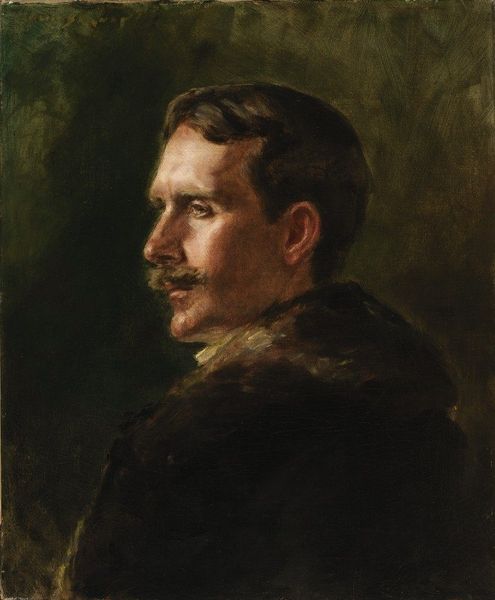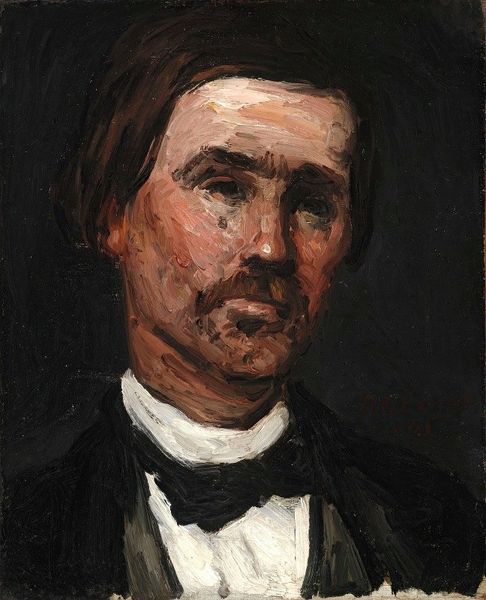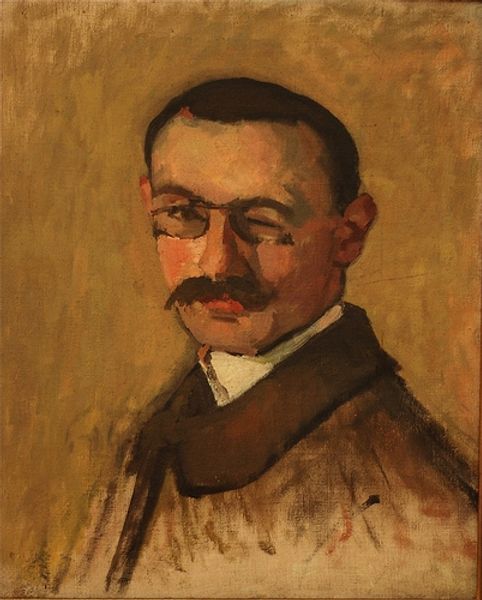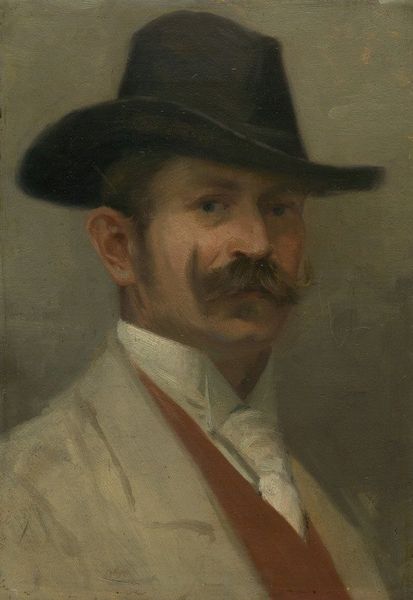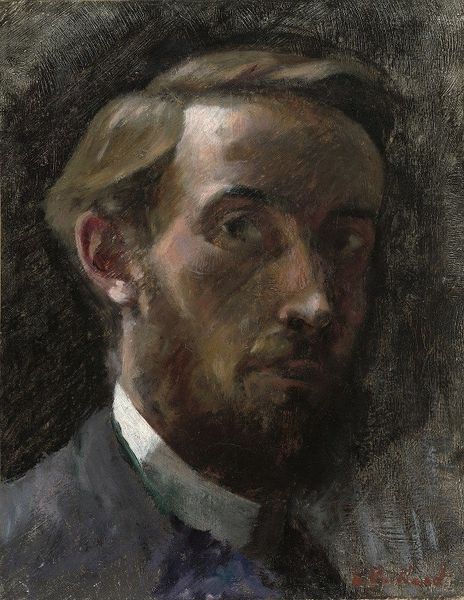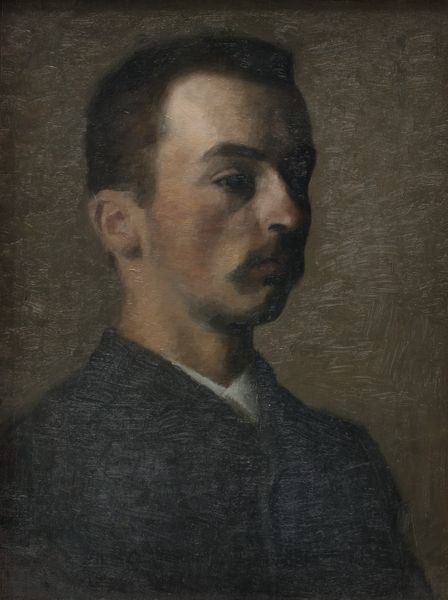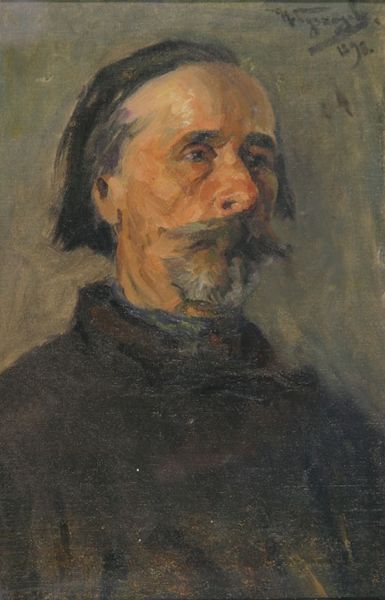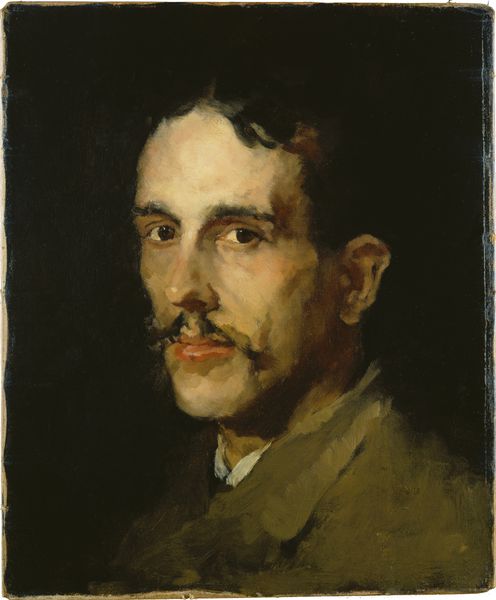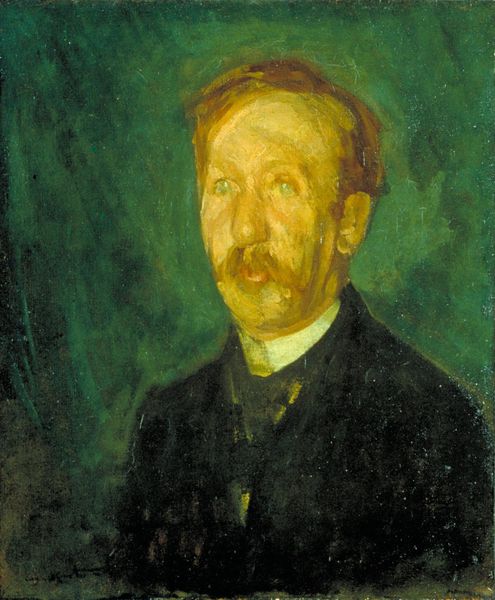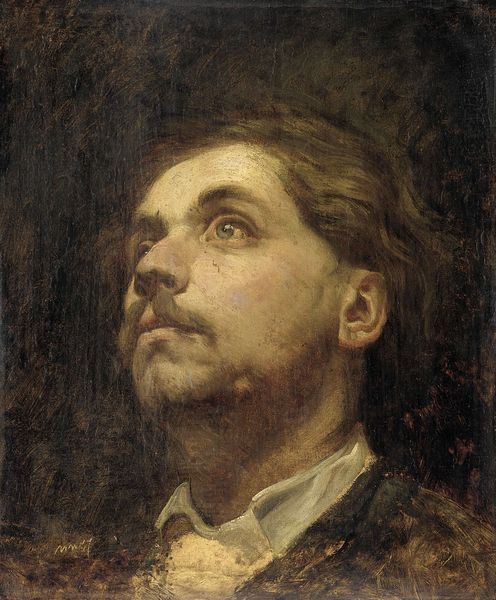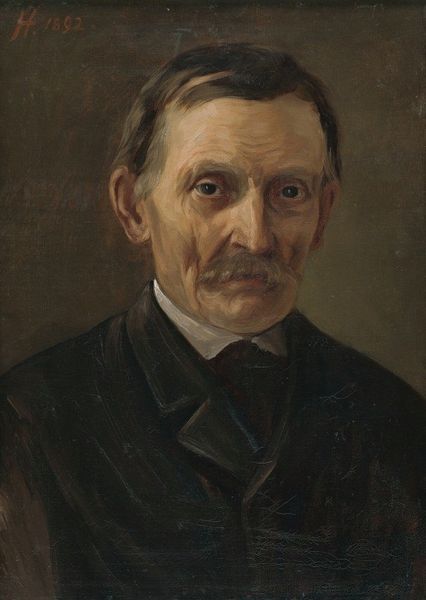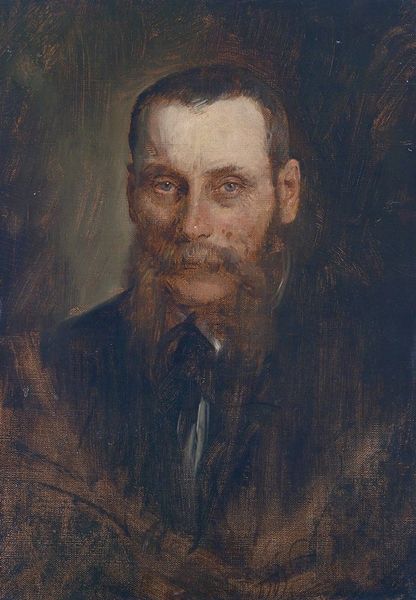
Adriaan Pit (1860-1944). Directeur van het Nederlands Museum voor Geschiedenis en Kunst te Amsterdam 1880 - 1900
0:00
0:00
oil-paint
#
portrait
#
dutch-golden-age
#
oil-paint
#
oil painting
#
realism
Dimensions: height 49.5 cm, width 31.2 cm, thickness 2.8 cm, depth 4.7 cm
Copyright: Rijks Museum: Open Domain
Curator: This is a portrait of Adriaan Pit, director of the Nederlands Museum voor Geschiedenis en Kunst in Amsterdam. Marinus van der Maarel created this oil painting sometime between 1880 and 1900. Editor: Right, instantly my eye goes to that wonderfully waxed moustache; what a magnificent upper lip adornment. It’s like a punctuation mark, adding a certain flourish to his persona. Curator: Indeed. Beyond the striking facial hair, though, what's intriguing is the institutional context. Here’s Pit, a museum director, implicitly commissioning or at least agreeing to a portrait. Consider the statement this makes about the museum's leadership and its self-image at the turn of the century. The very act positions Pit—and by extension, the museum—within a lineage of cultural figures worth preserving in visual form. Editor: That’s a valid observation. I see your point that the portrait signifies cultural standing. However, I find something introspective, almost melancholy, in his expression. It is quite subtle. Curator: Possibly so, and it does reflect the Dutch tradition of realism with its focus on capturing details and conveying a sense of individual character. But to me, that slight somberness only enriches our reading. Museum directorship during this era was not simply a matter of administration; it involved shaping national identity. Pit might carry the weight of such a mission, influencing public perception of art history and what constituted Dutch heritage. Editor: He's definitely carrying something, you're right. To bring it back to a more personal level: I love the impasto; I'm sensing quick brush strokes with bold textures and economical expression—there’s something intimate about such understated directness. Curator: Ultimately, it gives us insight into how art institutions saw themselves within Dutch society. We see their commitment to historical narratives—and perhaps to creating ones, as well! Editor: A lovely blend of the professional and personal. Makes one think about who holds the paint brush, and therefore, dictates the narrative!
Comments
No comments
Be the first to comment and join the conversation on the ultimate creative platform.
